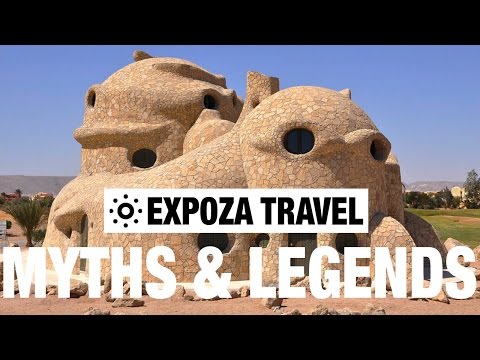
### Introduction
Africa, a continent bursting with diversity, is not just a land of scenic landscapes and wildlife but also a rich tapestry of cultural myths and legends. These stories form an integral part of Africa’s heritage, offering insights into the beliefs, values, and traditions of its people. A well-crafted vacation travel video guide focusing on Africa’s myths and legends not only serves as a bridge to these ancient narratives but also enhances the travel experience by deepening travelers’ understanding and appreciation of the destinations they visit.
### The Power of Myths and Legends in Travel
Myths and legends in Africa are more than just tales; they are the living soul of the continent’s history and culture. They offer explanations for natural phenomena, teach moral lessons, and add a mystical element to the stunning landscapes. For travelers, these stories transform mere locations into profound experiences — turning waterfalls, mountains, or forests into homes of gods, heroes, or spirits.
### Elements of an Engaging Travel Video Guide on African Myths & Legends
#### 1. **Storytelling**
The essence of any myth and legend is its story. A compelling travel video guide should narrate these tales with vivid imagery and engaging narration that captures the imagination. It should delve into how these myths have been passed down through generations and their relevance today.
#### 2. **Local Voices**
Incorporating interviews or commentaries from local storytellers or cultural experts can add authenticity to the video guide. Hearing myths from those who have inherited them makes for a more personal and genuine experience.
#### 3. **Cultural Contexts**
Understanding the cultural context behind each myth is crucial. The video guide should provide viewers with background information about different tribes or regions to help viewers appreciate why certain stories emerged.
#### 4. **Scenic Visuals**
High-quality visuals are key in any travel video guide. Showcasing the landscapes, monuments, artifacts, or ceremonies linked to myths adds depth to the narrative being told — making mythical characters almost tangible to viewers.
#### 5. **Music & Art**
Utilizing traditional music and highlighting local art related to myths can enrich the viewing experience significantly. It not only entertains but also preserves and promotes Africa’s diverse cultural heritage.
### Top Destinations for Myth-Inspired Travel in Africa
#### 1. **Egypt**
No mention of African myths is complete without Egypt – home to one of the world’s oldest civilizations rich with tales of gods like Isis, Osiris, Horus, and Anubis among others.
#### 2. **South Africa**
The San people possess an intricate set of beliefs reflected in their rock art which tells stories about human relations with nature spirits; these can be explored further in places like Cederberg Wilderness Area or Drakensberg Mountains.
#### 3. **West Africa**
Countries like Mali (with Dogon Country) reveal creation myths such as those involving Nommo – creatures believed by Dogon tribespeople to have descended from celestial beings.
#### 4. **Kenya & Tanzania**
The Maasai community offers insights into Ngai —the god believed to reside on Mount Kenya or Kilimanjaro according to different clans’ beliefs which influence rituals performed today.
### Conclusion
A vacation travel video guide focusing on African myths and legends provides more than just visual pleasure; it is an educational journey that taps into the spiritual heartland of this vast continent through its ancient stories—lending travelers not merely sightseeing experiences but pathways into soulful exploration.
By capturing elements such as storytelling finesse coupled with stunning cinematography linked directly with narratives rooted deep within lands covered; such guides serve as crucial tools towards fostering greater global respect towards cultural preservation while simultaneously enhancing tourism sustainability in Africa.
